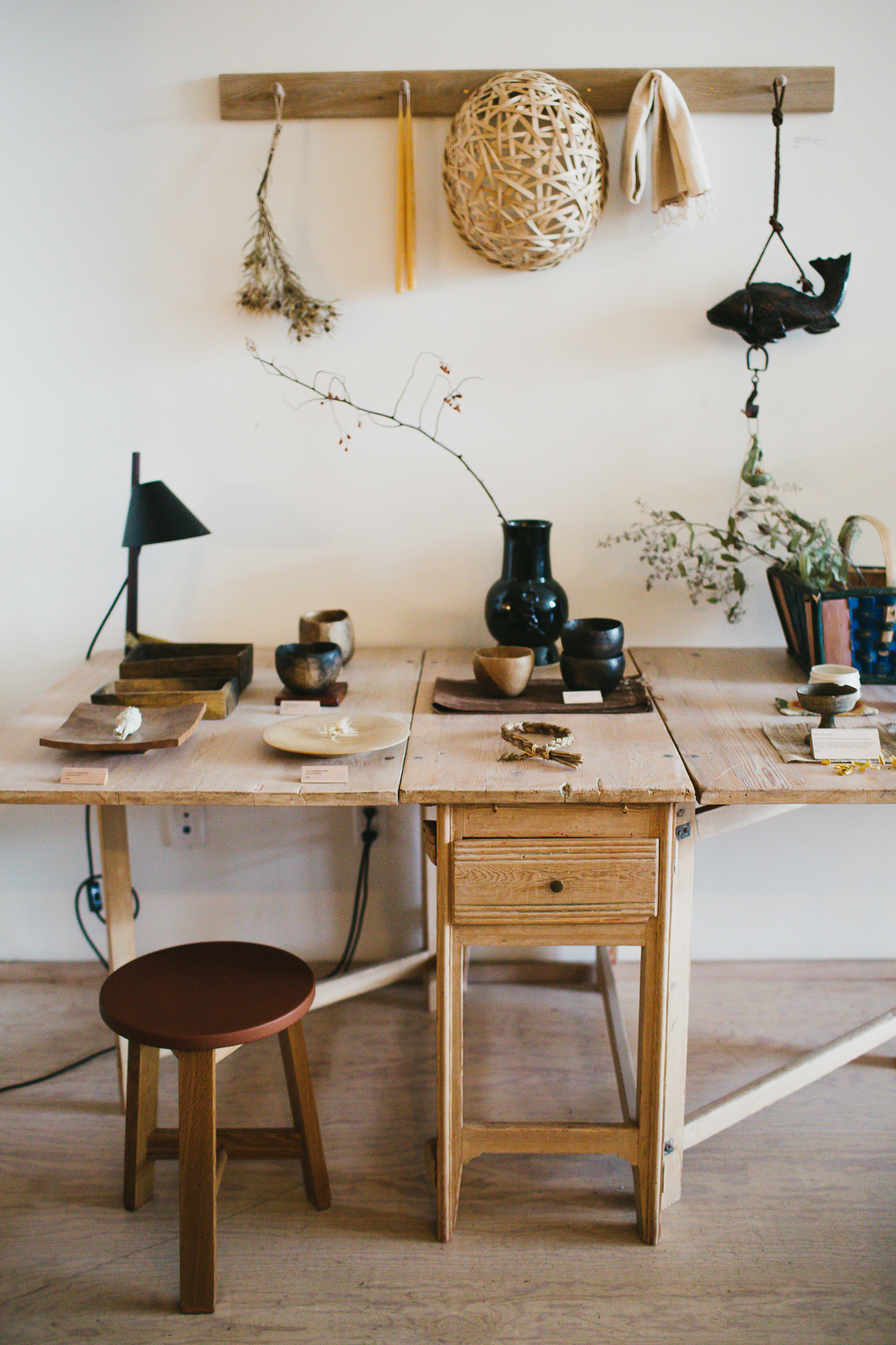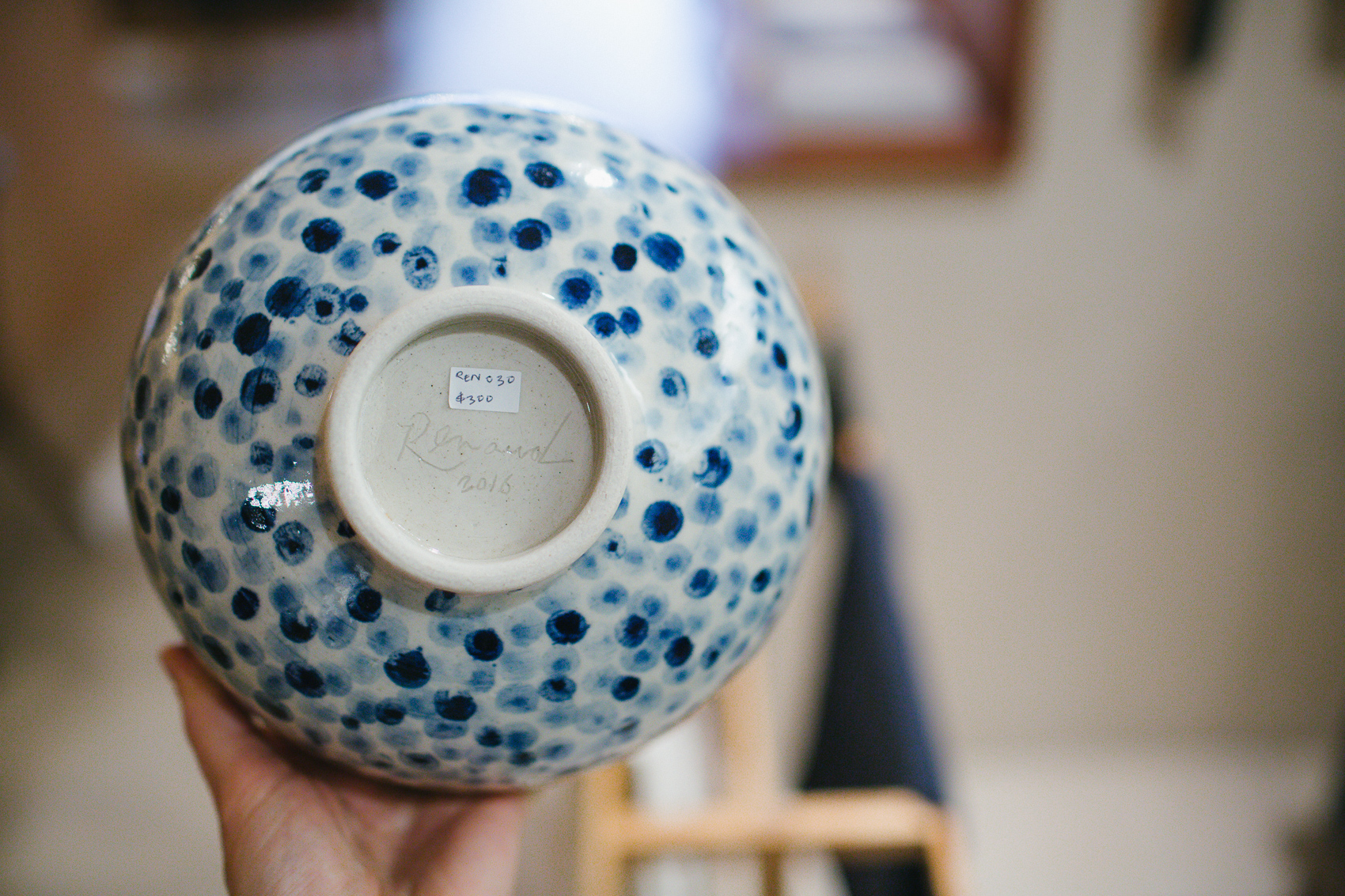Walking into Mjölk I naturally felt the need to lower my voice and slow down. There was just so much handcraftsmanship around me, carefully arranged in beautiful vignettes all around the store. I didn't want to miss anything. I felt the inclination to touch every piece to understand its story that much better, to trace the maker, their tools, their voice. Mjölk walks a thin line between art and craft and finds that subtle quiet balance between the two.
I talked with John and Juli Baker, Canadian husband and wife duo and the masterminds behind Mjölk, about their journey and how it all started.
–
Why "Mjölk"?
John: Mjölk means "milk" in Swedish. We always find ourselves exploring grocery stores whenever we are in a different country. Sweden has the highest milk drinkers per capita in the world, and the graphic design on the Arla milk packaging left an impression on us. We admired that something so simple, like a milk carton which is likely in most homes throughout Sweden had such a thoughtful design. It is that democratic thinking, that the smallest most immediate things should be the best designed that made us love Scandinavia and gave us the idea to use Mjölk as our name.
Juli: also the symbolism of milk, being pure, and natural has a connection to the aesthetic we are portraying.
–
Where did the idea for the store come from?
John: It came from our travels both to Scandinavia and Japan before we opened the store. These two places have had a profound impact on our ideas about design and architecture, and we connected with their philosophical ideas as well. We didn’t necessarily plan on having a store that had Scandinavian design and also Japanese design, it was just something natural. We found products from both cultures we liked and put them together. That was seven years ago, and ever since it’s almost become a type of category of design in itself.
As for how Scandinavia connects to Japan, I think there’s a reverence for nature and an almost spiritual connection to it, which is really important. I believe any Canadian can probably identify with that, because our cultural identity is so tied up in this great, expansive landscape. In a weird way, we were thinking about these elements in architecture, design and lifestyle and how we could make that relevant to people here in Canada. If I think about someone like Alvar Aalto, the Finnish architect, a lot of his buildings are informed by landscape, and the Finnish landscape is actually very similar to that of Ontario. Naturally, I can make the argument that if Canada was this homogenous place, which had a thousand years to develop a kind of central aesthetic taste, maybe it would resemble something like that. Maybe it will never happen, but for now we can borrow elements from architecture and design there and improve our lives here quite quickly.
–
Why did you decide to add exhibition/workshop/ publication component to your practice?
Juli: For us it was a result of traveling abroad to meet the designers and artisans we represent in our store. We would visit their studios, see how they work, see their environments. We just really wanted to document these settings and record the conversations.
John: The books and exhibitions are a way of connecting our audience with the inspiring people we have met. In the book we don’t make any mention to the shop, and we don’t necessarily only interview people whom we represent in the store. Sometimes it is a chef, an architect or designer we don’t have any affiliation to. We just love their work and feel we have a common way of thinking.
–
Do you have any advice for those who aspire to do what you do?
John: Never try to sell to what you think your audience is, always just be yourself and carry work you personally love.
–
Describe your average customer?
John: Most customers are from a creative industry. We’re really lucky to have the continued support of designers and architects who have consistently specified our work to go in their clients' homes.
–
What makes your store unique?
John: We’ve made a really nice environment here, everything is very considered with a clear central aesthetic. We have some of the nicest furniture ever produced by the Danish masters, we have contemporary Japanese crafts that are uniquely commissioned by the store and also a very nice selection of antiques, from 1500 year old excavated flower vases from Japan to Swedish folk craft and African stools.
–
What's your creative background?
John: I was (and still am) a musician and I’ve always identified myself as one. However, my more commercial job was working in advertising and then a custom furniture shop where I had the chance to design some furniture before opening my own place.
Juli: I studied curation, worked in publishing, and then did some interior photography. All of the work we’ve done in the past has somewhat continued in the store. We do a series of publications where I take the photographs and we also host exhibitions throughout the year with designers and artisans.
–
What's your biggest challenge?
Juli: We have a growing family, two young children named Elodie (4) and Howell (2) and it’s very challenging to balance work life and home life.
–
Who designed your store?
John: We worked with a local architect firm Studio Junction. We used a mix of expensive materials like teak wood alongside very humble materials like Douglas fir plywood. We love going to old shops that are fifty or sixty years old and are time capsules whose spaces continue to inspire. We set off to design an environment with Studio Junction that would continue to be relevant even as tastes change.
–
How does it fit in your city/neighborhood?
Juli: We’re based in the Junction neighborhood of Toronto. It is a far western neighborhood of the city, and it feels almost like the last frontier for a mom and pop retailer here in Toronto. There aren’t too many big chains, and the retailers are very passionate about what they do. We were early adopters to the neighborhood. There were a couple nice reclamation stores like Smash and Post and Beam, along with Crema Coffee, an organic grocery store and a cafe called the Beet. It was enough to carve out a really good lifestyle in the beginning and have low expenses while we were starting up our business.
–
Who (or what) inspires you?
John: We are continually inspired by furniture designer Borge Mogensen, and Finnish architect Alvar Aalto.
Juli: We tend to look at our close surroundings for inspiration, our home and family life. Always trying the solve the simple problems right here in front of us.
–
What's your happy place?
Juli: Probably my parents cottage on Georgian Bay. We inherited the property and have since renovated it. It’s on the lake and the best place for us to be as a family in the summer.
–
What's currently at Mjolk?
John: We've just had a huge exhibition exploring the American Shaker movement. We have more than thirty authentic Shaker works we are exhibiting, along with new work by three contemporary designers who have created new work inspired by the Shakers. We’re also happy that all of the new work is produced under the Mjolk brand and manufactured right here in Toronto.
See more: mjolk.ca












































